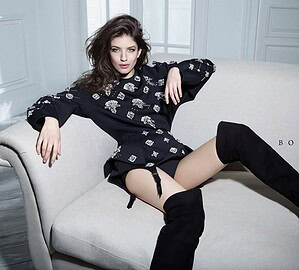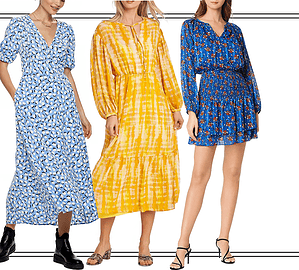When it comes to your wedding day, every detail counts — especially your suit. As the groom, you deserve a look that’s tailored not just to your body but to your personal style and the special occasion itself. A custom wedding suit allows you to control every element of your outfit, ensuring that you feel confident, comfortable, and uniquely “you.” Here are the top 10 things to consider when designing your custom wedding suit.

1. Suit Fabric: Choosing the Right Material
One of the most important things to consider when you are creating custom suits is choosing the right fabric. The fabric of your suit sets the foundation for its overall look and feel. For weddings, the choice of material depends on factors like the season, venue, and formality.
- Wool is a versatile and popular option, suitable for year-round wear due to its breathability and durability.
- Linen is perfect for summer or destination weddings because it’s lightweight and breathable, but be aware it wrinkles easily.
- Cotton is another option for a relaxed look, especially for outdoor or casual weddings.
If you’re having a winter wedding, consider heavier fabrics like tweed or velvet to keep you warm and stylish.
2. The Perfect Fit: Tailoring for Comfort and Style
One of the biggest advantages of a custom wedding suit is the perfect fit. Your suit will be tailored to your exact measurements, ensuring you look sharp and feel comfortable throughout the day.
When choosing the fit, think about your comfort level and the overall vibe of your wedding:
- Slim fit is a modern and streamlined choice, hugging the body closely without being too tight.
- Regular fit offers a more relaxed silhouette, ideal for a classic or traditional look.
- Relaxed fit provides more room and is often chosen for casual or outdoor weddings.
Getting the right fit ensures your suit complements your body shape and allows ease of movement.
3. Lapel Style: Notch, Peak, or Shawl?
The lapel is a small detail that can make a big impact on your suit’s formality and style. There are three main types to choose from:
- Notch lapel: A classic and versatile option, ideal for both formal and semi-formal weddings.
- Peak lapel: A more formal, statement-making choice, often seen on tuxedos and double-breasted suits.
- Shawl lapel: Smooth and rounded, this is commonly found on tuxedos and works well for ultra-formal or black-tie weddings.
Choosing the right lapel style helps you create the desired level of formality for your wedding attire.
4. Suit Color: From Classic to Bold
While classic colors like black, navy, and gray will always be timeless, a custom suit allows you to explore bolder colors that reflect your personality and the wedding theme. Consider:
- Black or charcoal for a traditional and formal look.
- Navy or dark blue for a versatile option that works in almost any setting.
- Gray or light gray for a stylish, semi-formal look, ideal for daytime or outdoor weddings.
- Burgundy, emerald green, or even ivory for those who want to make a statement and bring some personality into their wedding attire.
Choosing the right color helps you stand out while complementing the overall theme and color palette of the wedding.
5. Button Choice: Single-Breasted or Double-Breasted?
The button style you choose affects the suit’s overall silhouette and level of formality:
- Single-breasted suits are the most common choice, offering a clean, classic look with one, two, or three buttons.
- Double-breasted suits feature two rows of buttons and are often associated with more formal and bold styles. They add structure and a sense of grandeur, perfect for grooms looking to stand out.
6. Custom Linings: Adding a Personal Touch
One of the most fun aspects of designing a custom wedding suit is choosing the inner lining. While it won’t always be visible, a unique or personalized lining can add a special touch that reflects your personality.
- Consider bold patterns, such as floral, paisley, or geometric prints, to add a hidden splash of color.
- Personalized linings, such as fabric that features significant dates or phrases, can also commemorate your wedding day in a meaningful way.
7. Pocket Styles and Placement
While often overlooked, the pockets of your suit jacket play both a functional and aesthetic role. You’ll need to decide on the style and placement that best suits your needs:
- Flap pockets are the most traditional and versatile.
- Jetted pockets are sleek and minimalist, often seen on more formal suits.
- Patch pockets have a more casual feel and are typically found on less formal suits or blazers.
Some grooms also opt for additional details like a ticket pocket (a small pocket above the right front pocket) for an extra touch of vintage charm.
8. Buttonhole and Stitching: Subtle Details That Make a Difference
The buttonhole on the lapel is another area where you can add personalization. Whether it’s choosing a contrasting thread color or opting for decorative stitching, these details can set your custom suit apart. Consider adding a flower pin or boutonniere to the buttonhole, matching your suit with the wedding’s floral arrangements.
9. Monogramming: A Touch of Personalization
Monogramming your suit with your initials or wedding date is a small, personalized detail that adds sentimental value. This is often done on the inside of the jacket, under the collar, or on the cuff of your shirt. Monogramming not only makes the suit uniquely yours but also provides a keepsake element, reminding you of your special day.
10. Accessories: Ties, Cufflinks, and Pocket Squares
No suit is complete without the right accessories. When designing a custom suit, be sure to coordinate these finishing touches:
- Ties or bow ties: Choose fabrics and colors that complement the suit. For a formal look, go for silk or satin ties in classic colors. For more relaxed settings, opt for textured ties, such as linen or wool.
- Cufflinks: Add a polished touch to your shirt cuffs. You can opt for personalized cufflinks with your initials, or go with classic metallic designs for a timeless appeal.
- Pocket squares: A well-chosen pocket square adds elegance and flair. You can match it to your tie, or choose a contrasting color for a bolder statement.
Accessories can elevate your custom suit and complete the overall look, adding an extra layer of sophistication.
Designing a custom wedding suit offers endless possibilities for creating a look that’s uniquely yours. By paying attention to key details like fabric, fit, lapel style, and personal touches such as linings and monogramming, you can create a suit that is not only timeless but also tailored to your individual style. If you are still unsure about making your own custom suit, take a look at our collection of wedding suits here.



